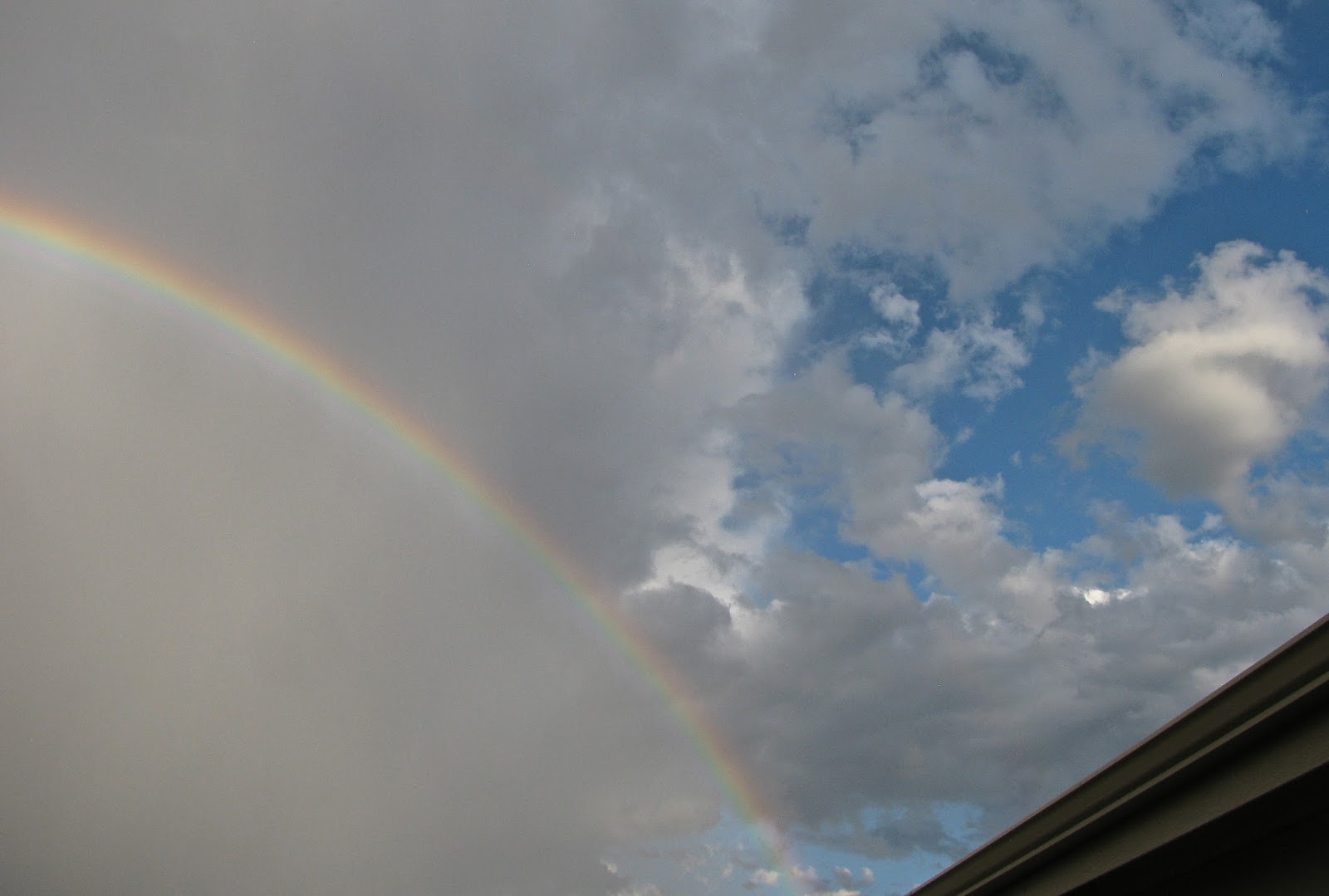Montana is often referred to as Big Sky Country.
But I think that Colorado gives Montana
a run for its money when it comes to big sky!
Every day in Colorado is a glorious free show.
All you have to do is look up.
Big Sky Country, Colorado Style
for the Ever~Patient's and my Friday Night Date Night,
I was treated to some spectacular clouds.
I often see altocumulus-castellanus clouds on sunny days.
They can portend thunderstorms later in the day.
These clouds have turreted or tower-like projections
that billow up from the base of the clouds,
and they can be very beautiful.
Most clouds form in the troposphere,
the lowest part of Earth's atmosphere.
Altocumulus-castellanus clouds are mid-level clouds
that occur at 6,500 - 20,000 feet or 2,000 - 6,000 meters.
Source: Wikipedia
Cumulus Congestus
Sure enough, as I walked to where I could see toward the west,
the altocumulus-castellanus clouds
quickly graded into cumulus congestus clouds.
These clouds, also known as towering cumulus,
are found in the mid-level of the troposphere.
Their tops look like cauliflower,
and they can produce light rain.
Source: windows2universe
Cumulus Congestus
Talk about cauliflower in the sky!
A cloud like this makes me walk very fast!
Cauliflower in the Sky!
I made it to Parkway safe and dry ~
No big, billowing cumulonimbus showed up this time.
No big, billowing cumulonimbus showed up this time.
Late Monday afternoon,
it was a story with a different ending.
Cumulonimbus clouds rolled in,
the skies opened up,
lightning flashed,
Cumulonimbus clouds
are very tall and very large clouds.
They can extend throughout the troposphere
from 6,500 - 60,000 feet or 2,000 - 16,000 meters.
Source: Wikipedia
Cumulonimbus clouds are often found
together with low-level cumulus clouds.
Cumulus clouds develop
below cumulonimbus clouds
at an altitude of less than
6,500 feet or 2,000 meters.
Source: Wikipedia
Do you know that in Colorado we have a monsoon?
Our monsoon is part of the annual monsoon that occurs
in the southwestern USA and northwestern Mexico.
Our monsoon typically begins in mid-July
and lasts until the end of August.
A shift in winds to the south
results in more moisture moving into Colorado
from the Pacific Ocean and the Gulf of Mexico.
It doesn't rain every day,
A shift in winds to the south
results in more moisture moving into Colorado
from the Pacific Ocean and the Gulf of Mexico.
It doesn't rain every day,
but rain takes place in a pattern of bursts and breaks.
Source: NOAA
When we get a monsoon rainstorm,
it can be violent with heavy rainfall,
strong thunder and lightning,
and sometimes shredding hail.
Flash floods can ravage the landscape,
especially in areas that have recently burned.
Usually the biggest excitement
Sometimes rain can pound down
Source: NOAA
When we get a monsoon rainstorm,
it can be violent with heavy rainfall,
strong thunder and lightning,
and sometimes shredding hail.
Flash floods can ravage the landscape,
especially in areas that have recently burned.
Manitou Springs, Flash Flood, August 2013
Usually the biggest excitement
during the monsoon rains
is golfers fleeing the golf course.
Sometimes rain can pound down
when blue sky is close by.
Sometimes it can be raining
on one side of our house
and not on the other!
Rain in the Distance,
No Rain Here,
Rain on the Backside of Our House (above)
And some days, like on Monday,
something special, almost magical,
happens!
I wish my camera could capture
the beauty of our Colorado rainbows!
Big Sky Country ~ Colorado style is spectacular!
And so are unexpected rainbows in your life!
An Unexpected Rainbow on My Grocery List!
This song, like a rainbow, can brighten any day:
US3 ~ Cantaloop
Source: YouTube emimusic

























































